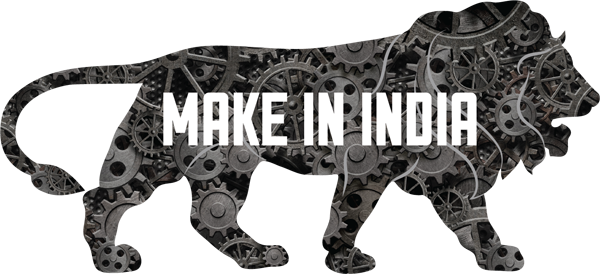
In the November 16 edition of The Daily Reckoning I had written a column on the recently implemented Swacch Bharat cess. In this column I had talked about how the Swacch Bharat cess is an example of maximum government.
In today’s column I want to make give more reasons on why the Swacch Bharat cess is a bad idea. Just to recount for readers who hadn’t read the earlier column, on November 6, the Narendra Modi government decided to implement a Swacch Bharat cess. The cess amounts to 0.5% on all services, and has pushed up the effective rate of service tax to 14.5%, from the earlier 14%. The cess has come into effect from November 15, 2015.
Any tax that the central government collects needs to be shared with the state governments. But that isn’t the case with cesses as well as surcharges that it collects. The money raised through cesses as well as surcharges is not shared with the state governments.
In fact, take a look at the accompanying table. In 2013-2014, the cesses and the surcharges collected by the central government amounted to Rs 71,713.7 crore. This formed 8.79% of the total tax revenue remaining with the central government after handing over the share of the state governments.
| Cesses and surcharges (in Rs crore) | 2013-2014 | 2014-2015 | 2015-2016 |
| Total cesses and surcharges | 71713.7 | 102859.4 | 117460.5 |
| Total tax revenue remaining with central govt after sharing with states | 815854.2 | 908462.8 | 919842.3 |
| Cesses and surcharges as a percentage of total tax revenue remaining with central govt | 8.79% | 11.32% | 12.77% |
| Source: www.indiabudget.nic.in |
In 2014-2015, the cesses and surcharges collected by the central government jumped by a huge 43.4% to Rs 1,02,859.4 crore. They formed 11.32% of the total tax revenue remaining with the central government after handing over the share of state governments. In 2015-2016, this number is projected to further jump to 12.77%. That’s a jump of close to 400 basis points (one basis point is one hundredth of a percentage) between 2013-2014 and now.
What does this tell us? Since the Narendra Modi government has come to power a greater proportion of the central government’s tax revenue is coming from cesses and surcharges. Take a look at the following table. Look at the last two entries which are in bold (The entries before that are exactly the same as in the earlier table).
| Cess and surcharge (in Rs crore) | 2013-2014 | 2014-2015 | 2015-2016 |
| Total cess and surcharges | 71713.68 | 102859.4 | 117460.5 |
| Total tax revenue remaining with central govt after sharing with states | 815854.2 | 908462.8 | 919842.3 |
| Cess and surcharges as a percentage of total tax revenue remaining with central govt | 8.79% | 11.32% | 12.77% |
| Total tax revenue of the central govt | 1138734 | 1251391 | 1449491 |
| Cess and surcharges as a percentage of total tax revenue | 6.30% | 8.22% | 8.10% |
| Source: www.indiabudget.nic.in |
In 2013-2014, cesses and surcharges formed around 6.30% of the total tax revenue earned by the central government. After the Modi government took over, the number has jumped to more than 8%.
This has been made possible through several things. In the budget presented in February earlier this year, the finance minister Arun Jaitley had subsumed the education cess and the secondary and higher education cess in central excise duty. “In effect, the general rate of Central Excise Duty of 12.36% including the cesses is being rounded off to 12.5%,” Jaitley had said during his budget speech. The clean energy cess was hiked from Rs 100 to Rs 200 per metric tonne of coal. The existing excise duty on petrol and diesel to the extent of Rs 4 per litre was converted into a road cess. And there was an enabling provision for the Swacch Bharat cess as well.
What is the problem here? The Modi government made a lot of song and dance about increasing the share of state governments in the tax revenues collected by the central government from 32% to 42%. After having done that, it has also managed to increase the amount of money collected through cesses and surcharges which it does not need to share with the state governments.
This goes against the entire idea of cooperative federalism which Narendra Modi had passionately espoused after coming to power. In fact, the 14th finance commission report released earlier this year had pointed out: “Almost all States have argued that cess and surcharges should form part of the divisible pool, with some suggesting that this should be done if cess and surcharges continue for more than three years.”
The education cess which brings in a bulk of the money collected under cesses, has been around for a very long time. In fact, the Comptroller and Auditor General in a recent report had pointed out that not all the money collected through the education cess went towards education.
As a news-report in The Economic Times points out: “The CAG report said that against the total collection of Rs 130,599 crore as primary education cess, only Rs 119,197 crore was transferred to the Prarambhik Shiksha Kosh in public account from 2004-05 to 2013-14, resulting in a short transfer of Rs 11,402 crore in the Prarambhik Shiksha Kosh.”
The cess on education as well as the new Swacch Bharat cess which will be used for improving sanitation, raises a very important question. If cesses have to be collected for things as important as education and sanitation, what is the government doing with all the actual tax revenue that it is raising? The tax revenue is essentially being used to finance what we can safely call maximum government. While Narendra Modi had promised to change that, up until now he has operated more or less similarly like the Congress governments before him.
For a cess to be effective it is important that it be ring fenced properly. Take the case of the cess on diesel implemented by the Atal Bihari Vajpayee government to finance the national highway development programme. It was a proper ring-fenced cess where there was total clarity of what the money collected under the cess will be used for.
In comparison, the definition of the Swacch Bharat programme remains very vague and given that it will be very difficult to ring-fence it properly. Also, it needs to be asked how effective can a central government be in implementing a cleanliness and sanitation programme at the local level throughout the country. And given that wouldn’t it make more sense in sharing the money raised with state governments?
To conclude, in order to woo foreign investors to invest in India, the finance minister Arun Jaitley has been talking about a fair and predictable tax regime. In fact, at the 11th Indo-US Economic Summit in September earlier this year he had said: “We can evolve into fairest and predictable taxation regime in India.”
How about offering a fair and predictable tax regime to the Indian tax payer as well, Mr Jaitley?
The column was originally published on The Daily Reckoning on Nov 19, 2015


